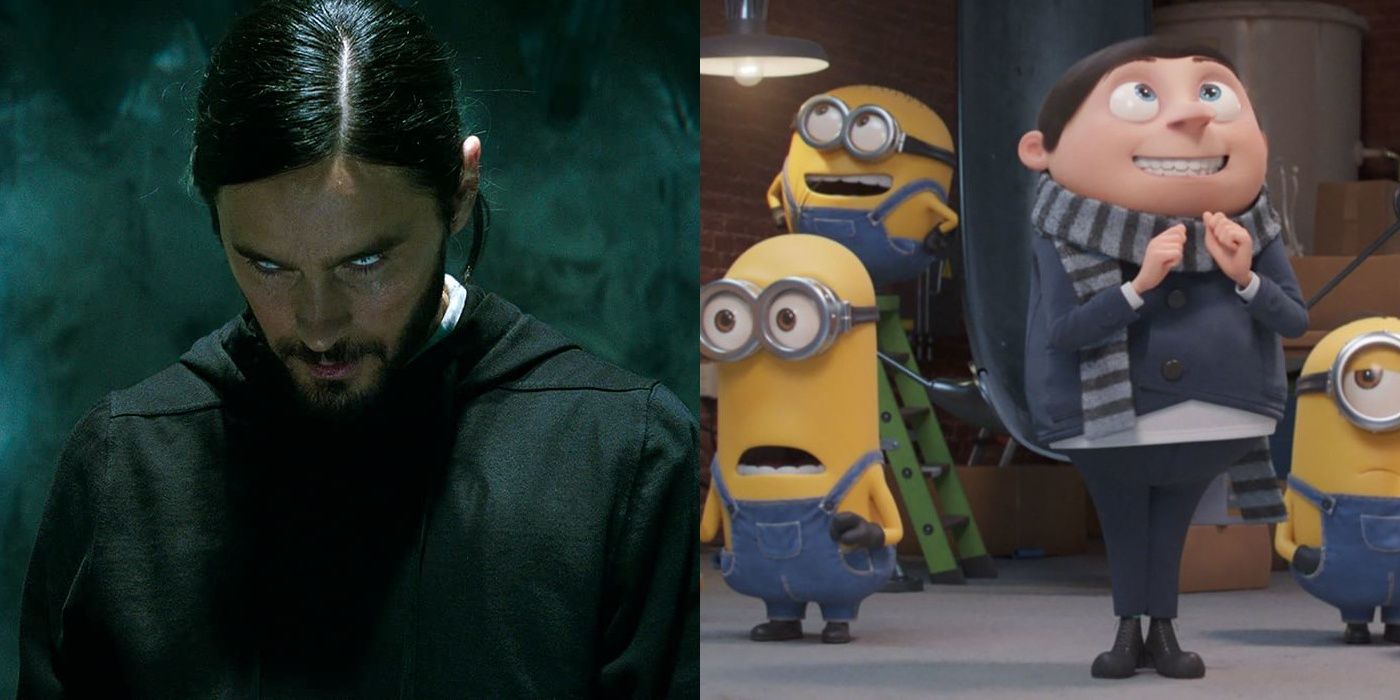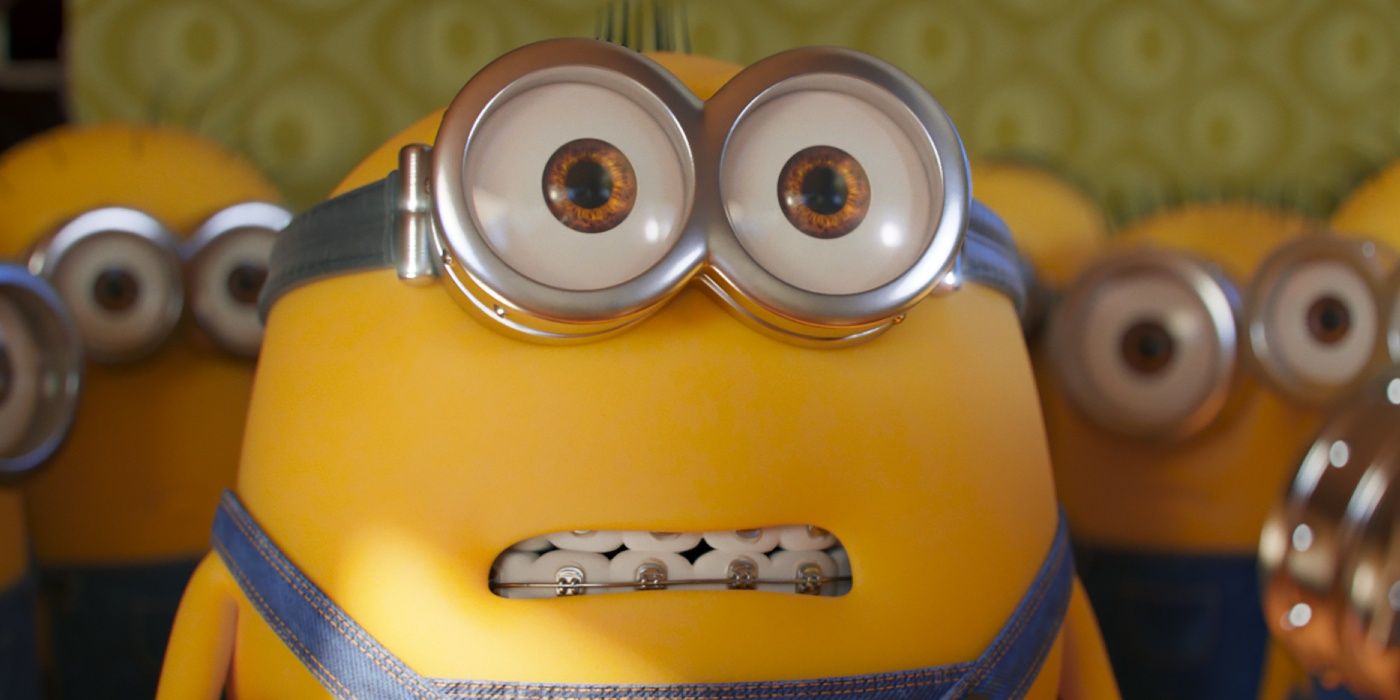Across the massive corporate bulk of Sony and its endless army of well-paid professionals, a single question burns its way through every myopic discussion of marketing trends. Producers, wealthy financiers, and would-be tastemakers are tearing their hair demanding to know why their movie's overwhelming memetic potential didn't translate to box office success. Things have only gotten worse now that they have a perfect example of how it should've gone.
Sony's latest entry in their underwhelming Spider-Man cinematic universe was a mild box-office disappointment that would've been negligible had they not doubled down. In its current state, the film is the laughingstock of the superhero movie craze. Meme culture, however, has moved on to a new target and aided in its meteoric rise.
Those who pay attention to the ebbs and flows of social media meme culture have likely already heard this story. The new cinematic center of attention for this demographic is Minions: The Rise of Gru, the fifth entry in the Despicable Me franchise and the sequel to 2015's Minions. The film was delayed for two years by the pandemic, but marketing for its release never died down. One could argue marketing for the franchise is one of the most ubiquitous cultural images on Earth, with the eponymous Minions appearing on every conceivable product. The memetic reaction, however, has been a bit more unpredictable.
The current trend surrounding Minions entreats swarms of gen-z TikTok fans to don their finest suits and see the film in theaters. While most of these debonair youths have been decent and civil, some have turned their screening into an unhinged rave. Some theaters have resorted to banning well-dressed groups of young men from purchasing tickets, apparently unaware of the effect telling a teenager "no" has on their ambition and guile. This controversial trend has increased the film's public profile, while also providing the producers behind Morbius' second theatrical run something to point to as their best-case scenario. Why did the memes raise Rise of Gru when they only seemed to gleefully help bury The Living Vampire?
The obvious answer is that they didn't. If someone were to delete TikTok tomorrow, it would likely not affect either film's box office performance. The memetic response to Morbius arose due to its perceived lack of quality and existed to derive fun from a film that seemed to lack any. No one was interested in a film about Michael Morbius, the trailers looked rough, and people are sick of superheroes. A no-name like him couldn't fight the tide of fatigue, so people decided to have some ironic fun dancing on the grave everyone correctly assumed he'd end up in. Conversely, Minions is one of the most ubiquitous brand images in the world right now. Kids' movies always do well at the box office, so a Minions sequel was guaranteed millions from a devoted fanbase of children and parents. Meme or no meme, the failure of Morbius, and the success of Minions were written in the stars and beyond the power of social media to change.
Though the overall box office performance is barely tied to the memetic response, it is still worth asking why the hive mind gave the thumbs up to Illumination's latest output. It's not like this is an underdog story. Both films are big-name IP cash grabs before they're anything else. Whether it's trying desperately to tie an ailing brand to a larger competitor or putting out another middling kids' comedy to sell a few billion more toys, neither is particularly inspiring. The memetic response would've been fairly predictable to anyone watching social media and reading the proverbial tea leaves.
If there is one thing that meme culture loves to glom onto, it's children's cinema. The Shrek franchise sits on an immovable throne from which it may never be removed. From Bee Movie to Megamind, there are countless large and small memes surrounding kids' media from the 2000s and 2010s. This coincides with the titanic force of nostalgia that dominates so much of online culture. Kids who saw the first Despicable Me when they were 6 are 18 today. The franchise's overwhelming presence beyond the big screen ensures that countless kids saw these little yellow creatures every day of their life. These elements also tie in with the ongoing pandemic, which has kept many out of the theater. The desire to return in style is understandable and a trend that requires participants to make an event of their trip to the local multiplex is perfect. This bizarre perfect storm places Rise of Gru in an inconceivably ideal position to profit from meme culture. Minions: The Rise of Gru may be the greatest beneficiary of memes ever made, the only thing that could unseat it would be the theoretical release of another Shrek.
At the end of the day, this remains a story about the blindness of those who make six-figure incomes to know what will be popular. Sony was too myopic to divine sincere engagement with a piece of media with ironic dunking, and they paid the price twice. The memetic hive mind is a fickle beast, but those who look within its walls can predict it. Maybe more producers should put their teenage nieces and nephews on their payroll.






